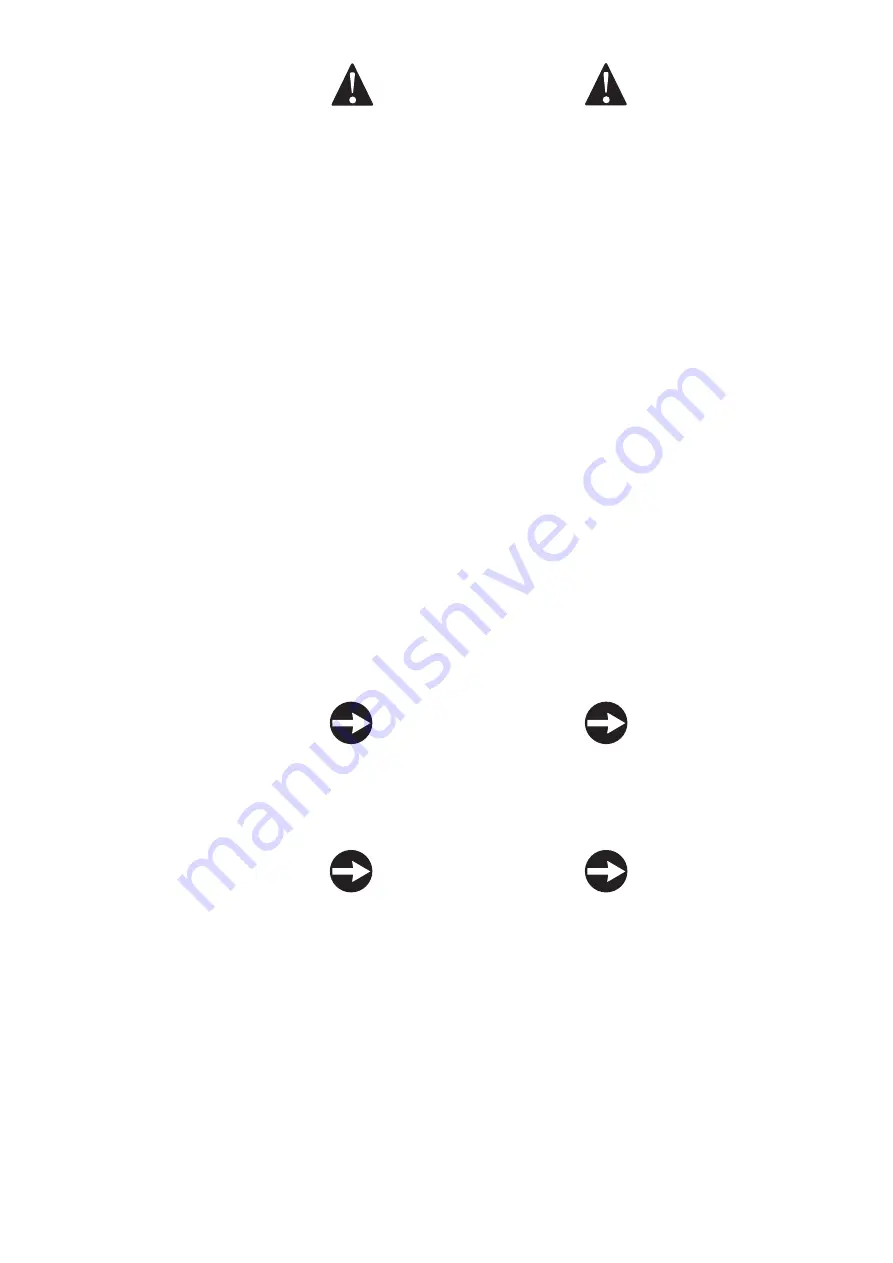
36
9.5 Elektrischer Anschluss
Achtung:
Der Anschluss darf nur von einem Elektro-
fachmann nach gültigen DIN-VDE, sowie UVV-
Bestimmungen durchgeführt werden. Der Auf-
steller des Gerätes muss eine Prüfung nach
DIN VDE 0701 oder nach der entsprechenden
nationalen Norm durchführen und protokol-
lieren. Die maximale Netzimpendanz darf den
Wert von (0,33 + j 0,207) Ohm nicht über-
schreiten.
Schliessen Sie das Gerät an eine 5-adrigen
Netzzuleitung zum Anschluss an Drehstrom 400
V 3 N ~ 50 Hz, Null- und Schutzleiter an.
Jedem Gerät ist der zugehörige Schaltplan
separat beigelegt.
1.
Bauen Sie in die fest verlegte elektrische
Installation eine Trennvorrichtung zum
Trennen vom Netz mit mindestens 3 mm
Kontaktöffnung an jedem Pol ein.
9.6 Münzzeitgeber bzw. Zentralsteuerung
Der Anschluss darf nur von einem Elektro-
fachmann nach DIN VDE 0100 oder nach der
entsprechenden nationalen Norm durchge-
führt werden.
Münzzeitgeber montieren
1.
Öffnen Sie das Gerät.
2.
Trennen Sie die Kabelverbindung zwischen
Tür und Gehäuse.
3.
Hängen Sie die Haupttür und das
Kassenfach aus.
4.
Erstellen Sie die gewünschten Durch-
brüche für die Stromkabel am Gehäuse.
5.
Schrauben Sie beiliegende Kabelver-
schraubungen in die Öffnungen.
6.
Befestigen Sie das Gerät mit 3 gedübelten
Schrauben.
Das Gerät muss an einer festen,
erschütterungsfreien Wand im
Lot angebracht werden.
7.
Ziehen Sie die Netzzuleitung und die
Steuerleitungen durch die Kabelver-
schraubungen.
8.
Klemmen Sie die Leitungen an den
gekennzeichneten Anschlüssen an.
Sehen Sie unbedingt eine all-
polige Netztrennung (Kontakt-
öffnung mind. 3 mm) zwischen
Münzzeitgeber und Stromnetz und
ein Erdungsanschluss vor.
9.
Klemmen Sie die Kabelverbindungen
zwischen Netzteil und der Hauptplatine und
Erdung an.
10. Hängen Sie das Kassenfach und die
Haupttür ein.
11. Schliessen Sie das Gerät.
Die Bedienung und die Einstellung des Ge-
rätes entnehmen Sie der Bedienungsanleitung
des Münzzeitgebers. Achten Sie bitte darauf,
dass aus Sicherheitsgründen am Münzer
höchstens die maximale Besonnungszeit des
entsprechenden Gerätes eingestellt werden
darf (siehe Besonnungstafel).
9.5 Electrical Connection
Warning:
Electrical connections must be carried out by
a qualified electrician in accordance with the
valid DIN, VDE and UVV specifications.
The persons setting up the unit must test the
unit and write a report in accordance with DIN
VDE 0701 or another adequate national norm.
The maximum power system impedance must
be limited to (0,33 + j 0,207) ohm.
Connect the unit with a 5-core mains cable for
connection to three-phase current 400 V 3 N ~
50 Hz, neutral and earth conductors.
The appropriate wiring diagram is supplied with
every unit.
1.
Install a separation device in the
permanently fixed electrical installation to
separate the mains power with a contact
opening of at least 3 mm on each pole.
9.6 Coin Meter or Central Desk Operation
The unit may only be connected by a qualified
electrician in accordance with DIN VDE 0100.
Fitting the Coin Meter
1.
Open the unit.
2.
Separate the cable connection between the
door and housing.
3.
Remove the main door and coin container.
4.
Push out the holes you require in the
housing for the power cable.
5.
Screw the cable glands supplied into the
openings.
6.
Mount the unit with 3 plugged screws.
The unit must be fitted vertically
to a solid, vibration-free wall.
7.
Pull the mains cable and control wires
through the cable glands.
8.
Connect the cables to the labelled
connections.
It is essential to provide an all-
pole mains disconnector (contact
opening 3 mm) between the coin
timer and power supply and an
earth connection.
9.
Connect the cable connections between the
mains supply circuit and the main board
and earth.
10. Insert the coin container
and the main door.
11. Close the unit.
Information on operating and setting the
unit can be found in the coin meter
operating instructions.
For safety reasons, ensure that the maximum
tanning session fixing by the coin meter is
extremly the maximum tanning time of the
appropriate unit Type (see timetable).
Warnung
Warning
Funktion
Function
Function
Funktion


























